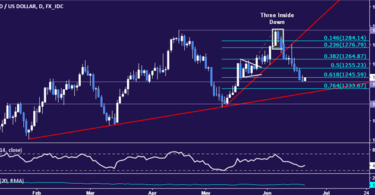President Trump just “greenlighted” the 2019 National Defense Authorization Act and a top line military budget of $717 billion… $616.9 for the Pentagon’s base budget, $69.0 billion for overseas contingency operations funding and a $21.9 billion for nuclear weapons.
That’s the single largest investment in our military that I can recall. Not surprisingly, it’s also a massive investment opportunity.
Defense spending is a foundational element in our world and, therefore, backed by trillions of dollars in spending that will happen no matter what trade wars there are, no matter what happens in Turkey, and no matter whether there’s a recession or not.
[CRUCIAL] This Mysterious Pattern Keeps Appearing with Big Stocks
Worldwide defense spending will hit $2 trillion just two short years from now, according to Deloitte.
Now, I know what you’re thinking… there are so many companies out there that buying defense stocks is easy. Not so.
What most people don’t realize is that all defense spending isn’t the same. And, I’m not talking about the dollars involved. I’m talking about where the money is going.
When you understand how to figure out what happens next, your investment results are going to be different than if you simply get on board with everybody else. And, odds are, far better.
Take this budget, for example.
All the usual stuff is there – $7.6 billion for 77 F-35 Joint Strike Fighters (made by Lockheed Martin Corp. (NYSE:LMT) and up 157.1% in the past five years), $85 million for UH-60M Black Hawks (helicopters made by Sikorsky, a Lockheed Martin business unit), full funding for the B-21 Raider (made by Northrup Grumman Corp. (NYSE:NOC), up 209.5% over the past five years), $1.56 billion for three littoral combat ships, a fourth Ford-Class aircraft carrier, $225.3 million for Stryker A1 modernization, 135 M1 Abrams tanks, and more.
But it’s the $140 million added to the Missile Defense Agency that catches my attention because it’s intended for the development of critical directed energy and space sensing projects as well as hypersonic defense.
This is Buck Rogers stuff and early versions will be ready within the next five years, perhaps ten at most.
In fact, hypersonic weapons could be the single most disruptive battlefield technology since stealth came on the scene. Both China and Russia are spending heavily on it, which means, of course, our military has to develop weapons systems and related technology capable of countering that.
Conventional missiles fly at up to 20 times the speed of sound along very predictable pathways – trajectories in “milspeak.” But hypersonic variants may be far faster and far more maneuverable, which means they’re harder to shoot down.
There are two approaches at present – hypersonic glide vehicles that separate from a booster and “glide” to their targets at incredible speeds, and “scramjet” engines that compress fast moving air to boost speed instead of relying on oxidizers to boost propulsion.
The Boeing Co. (NYSE:BA), Raytheon Co. (NYSE:RTN), and Lockheed Martin Corp. (NYSE:LMT) are all working on variants and all remain exceptionally compelling investments, even at this stage of the game and even if you’re just putting a toe in the proverbial water when it comes to defense.
However, I’ve discovered a much smaller company that I think you’re going to like even more.
The Small Company That’s Taking Advantage of Hypersonic Technology
It’s working with Lockheed’s “Skunk Works” on a proof of concept plane that would fly at Mach 6+ and field an attack or defense anywhere on any continent in less than 60 minutes.
What’s more, the company recently provided an important 24-hour turn around test of the AR-22 Engine that would power a “spaceplane” concept, being fielded by Boeing and DARPA.
And, as if that weren’t enough, the company recently delivered the power generator being used in the Mars 2020 Rover and is actively providing the full propulsion system on the Parker Solar Probe project with NASA.
It’s also leading in high-performance 3D printing technology and specialty metals production, which gives it a huge “in-house” lead when it comes to the kinds of groundbreaking engineering solutions that will be required for next generation weapons and defense.
Of course, there will also be commercial spinoffs that add to profit potential. Hypersonic jets, for example, could fly from New York to Tokyo in under three hours without the ear-splitting sonic booms that damage property and people alike.
Shares are up 19.36% year-to-date, but I believe the real move remains ahead.
In fact, I think the stock could double based on what’s happening with hypersonic research.
And, it’s not just me who thinks so.






